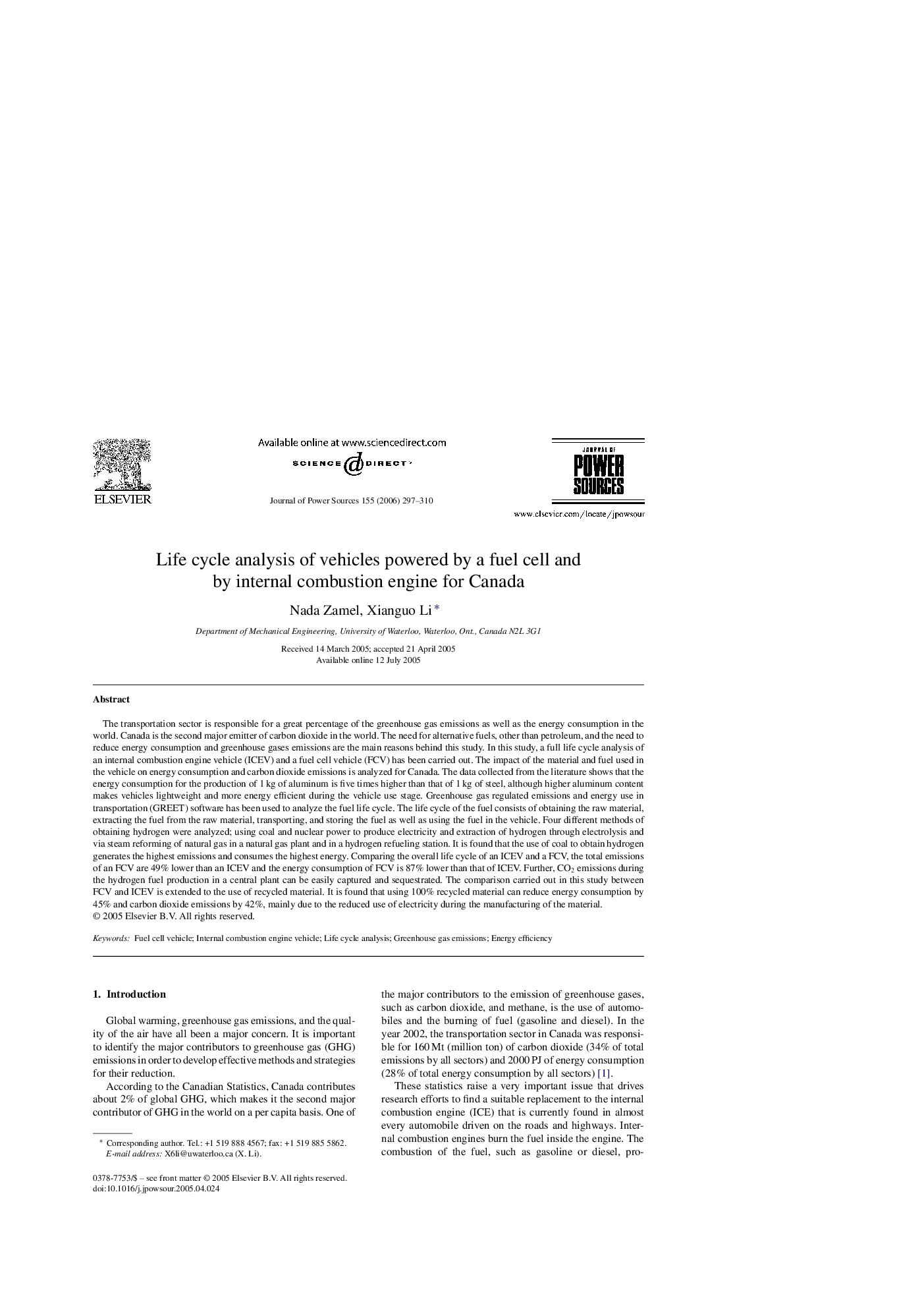| کد مقاله | کد نشریه | سال انتشار | مقاله انگلیسی | نسخه تمام متن |
|---|---|---|---|---|
| 1287905 | 973238 | 2006 | 14 صفحه PDF | دانلود رایگان |

The transportation sector is responsible for a great percentage of the greenhouse gas emissions as well as the energy consumption in the world. Canada is the second major emitter of carbon dioxide in the world. The need for alternative fuels, other than petroleum, and the need to reduce energy consumption and greenhouse gases emissions are the main reasons behind this study. In this study, a full life cycle analysis of an internal combustion engine vehicle (ICEV) and a fuel cell vehicle (FCV) has been carried out. The impact of the material and fuel used in the vehicle on energy consumption and carbon dioxide emissions is analyzed for Canada. The data collected from the literature shows that the energy consumption for the production of 1 kg of aluminum is five times higher than that of 1 kg of steel, although higher aluminum content makes vehicles lightweight and more energy efficient during the vehicle use stage. Greenhouse gas regulated emissions and energy use in transportation (GREET) software has been used to analyze the fuel life cycle. The life cycle of the fuel consists of obtaining the raw material, extracting the fuel from the raw material, transporting, and storing the fuel as well as using the fuel in the vehicle. Four different methods of obtaining hydrogen were analyzed; using coal and nuclear power to produce electricity and extraction of hydrogen through electrolysis and via steam reforming of natural gas in a natural gas plant and in a hydrogen refueling station. It is found that the use of coal to obtain hydrogen generates the highest emissions and consumes the highest energy. Comparing the overall life cycle of an ICEV and a FCV, the total emissions of an FCV are 49% lower than an ICEV and the energy consumption of FCV is 87% lower than that of ICEV. Further, CO2 emissions during the hydrogen fuel production in a central plant can be easily captured and sequestrated. The comparison carried out in this study between FCV and ICEV is extended to the use of recycled material. It is found that using 100% recycled material can reduce energy consumption by 45% and carbon dioxide emissions by 42%, mainly due to the reduced use of electricity during the manufacturing of the material.
Journal: Journal of Power Sources - Volume 155, Issue 2, 21 April 2006, Pages 297–310